Barcelona Travel Guide
Barcelona promises legendary architecture, delicious Catalan cuisine, a festive beach culture and plenty for party animals. This thrillingly unique city is home to some of the most famous and bizarre architecture in the world, and has been the playground of exciting modern artists such as Joan Miro, Picasso and, of course, Antoni Gaudi. Travellers who visit will land in sunny Spain's major holiday destination, which is cosmopolitan and lively, and has superb shopping, a great climate, beautiful beaches, a fun nightlife, and plenty of Spanish pizzazz. Barcelona is the gateway to the Costa Brava and Costa Dorada, with their many popular beach resorts, but the interesting sightseeing and the treasures of centuries, not to mention the great restaurants and vivacious locals, will keep visitors happily occupied within the city itself. A visit to Spain is not quite complete without a stroll down the iconic Las Ramblas pedestrian street in Barcelona.
Best time to visit Barcelona
It's always the right time to holiday in Barcelona, with its long, hot summers and mild winters. The best months to visit are between June and September, but those who find the heat and crowds taxing should avoid mid-summer (August).
What to see in Barcelona
-Catch a football match and take a tour at the famous Camp Nou stadium and FC Barcelona Museum.
-Admire the bizarre and beautiful work of renowned Catalan architect and designer, Antoni Gaudi, at La Sagrada Familia and Guell Park.
-Visit the Joan Miro Foundation to see the colourful art of another iconic Catalan artist.
-Marvel at the views of Barcelona from the hills of Montjuic and Tibidabo, which boast many other attractions.
What to do in Barcelona
-Take the kids into the enthralling underwater world of the Barcelona Aquarium.
-Enjoy the sun, sand and sea, as well as the festive atmosphere, on Barcelona's beaches.
-Explore the Museum of Contemporary Art, which is a fun, creative space.
-Picnic and stroll in the lovely Parc de la Ciutadella in the centre of the city.
Beyond Barcelona
Many exciting excursions are possible from Barcelona, which is the gateway to the resort destinations of the Costa Brava and Costa Dorada, including the popular Sitges, just a few miles south of the city, and the quaint Tossa de Mar, a short way north. Other wonderful daytrip destinations include the lovely Catalan town of Figueres, the birthplace of Dali; the famous monastery at Montserrat, founded in 1025; and the UNESCO-listed Parque Natural de Bardenas Reales.
Getting there
El Prat Barcelona Airport, situated seven miles (12km) southwest of central Barcelona, is one of the busiest international airports in Spain, with direct flights arriving from numerous cities in the US and UK, as well as Europe.
Did you know?
-Barcelona has 12 abandoned metro stations that are said to be haunted and can be explored on ghost tours.
-There were no beaches in Barcelona until 1992, when the coastal leisure zone was created for the Olympic Games.
-Barcelona's stunning and unique Sagrada Familia Church has taken longer to build than the Great Pyramids.
Things to do in Barcelona
Barcelona is a sightseer's paradise that has internationally celebrated architecture, seven beaches and 10 hectares (25 acres) of municipal parkland. From the hills of Montjuic and Tibidabo, visitors can take in the scope of the destination and look down on the scenic tree-lined La Ramblas Boulevard, which is the iconic pedestrian street running from the city centre to Barcelona's oldest harbour, Port Vella.
With beautiful warm weather for most of the year, Barcelona is one of those cities blessed with plenty of outdoor attractions and activities. Visitors can splash around in the turquoise Mediterranean, cycle the neighbourhoods of this bicycle friendly city, or jump on the hop-on hop-off tourist bus for some sightseeing.
Barcelona also carries with it a rich history. Founded over 2,000 years ago, the city's architecture reflects its Roman heritage, and carries the mark of various influences since. Particularly notable is the Catalan modernisme architecture movement founded in Barcelona, and Gaudi's distinctive creations are among many of the city's buildings declared as World Heritage Sites. The weird and wonderful architectural and artistic creations of Barcelona make the city refreshingly unique, and quite unlike any other urban destination.
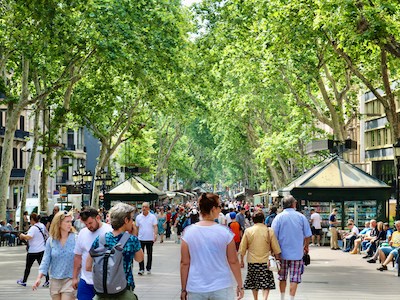
La Rambla
Arguably the most famous street in Europe, the wide tree-lined boulevard known as La Rambla (or Las Ramblas) is a long continuous pedestrian avenue that technically changes names five times as it cuts through Barcelona's Old Town, the Barri Gotic, from the Placa Catalunya to the city's port. It's lined with cafes, restaurants, and shops, usually thronged with leisurely walkers enjoying the sights and sounds. The sprawling marriage of nature and creative architecture and ornamentation that is Gaudi's Guell Park is a must. The pretty square of Placa Reial, enclosed by impressive buildings and promising some fantastic restaurants and nightclubs, is a popular social venue and sometimes hosts concerts and live performances.
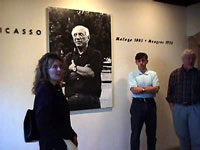
Picasso Museum
Five palaces dating from the 13th to 15th centuries have been converted into the Picasso Museum, celebrating the country's most famous artist. Sitting on Carrer Montcada, a street known for its elegant medieval structures, it's home to one of the most complete collections of works from his youth and formative years. Pablo Picasso spent his early years in Barcelona (between 1901 and 1906), and the museum is now one of the city's top attractions. It was his wish that his early work would be displayed in Barcelona, and the core of the collection was donated by the artist himself. The permanent collection now consists of 4,249 works and the art is complemented interestingly by the old buildings, which showcase the Catalan Gothic style.
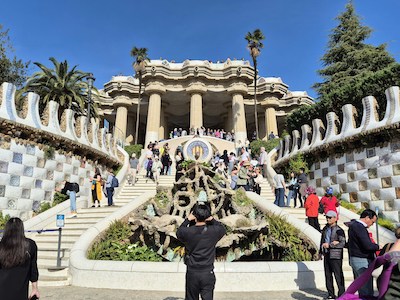
Guell Park
Catalan architect, Antonio Gaudi, was known as the greatest exponent of Catalan Modernism, and left his mark on Barcelona nowhere more than in the gardens of Guell Park. Sitting on Camel Hill and offering splendid views of the city, it was originally planned to be a garden city suburb. However, only two houses were completed before it was turned into a public recreational park. The gardens are festooned with examples of Gaudi's strange and mesmerising work, including flights of stairs, columns, and a plaza decorated with mosaics. Famous features include Gaudi's dragon, and the Sala Hipostila, or Doric Temple, which is a forest of 88 stone columns. Gaudi enjoyed experimenting with natural forms and the park is a fascinating mixture of art and nature.
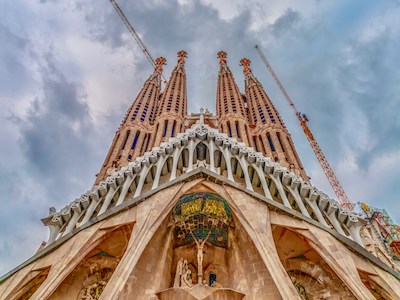
La Sagrada Familia
Designed by modernist architect Antoni Gaudi, the bizarre Sagrada Família is one of Catalonia's most intriguing landmarks. Building started in 1882, but it remains unfinished and an object of controversy. Gaudi worked on what was considered his masterpiece until his death in 1926. The structure displays his characteristic Art Nouveau style and creates a unique interpretation of the Gothic architectural tradition. Gaudi's plans for the completed church were mostly destroyed during the Spanish Civil War and those leftover have been disputed since. The extraordinary building is a UNESCO World Heritage Site, and is fascinating even to those who don't find it beautiful. The church has been consecrated and is used for religious services.
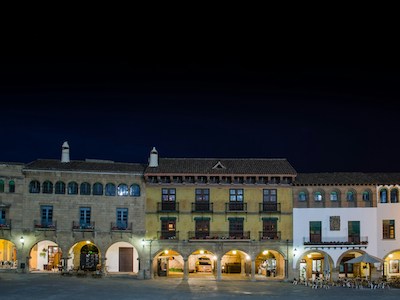
Montjuic
A few of Barcelona's showpieces sit on the hill of Montjuic, which overlooks the city centre. They are the main sites of the 1992 Olympics; the Poble Espanyol; the Joan Miro museum; and the National Art Museum of Catalonia. Montjuic has been the site of several fortifications over the centuries and the most recent of these is the Castle of Montjuic, dating from the 17th century. The castle is now home to the Military Museum as well as the Museum of Comics and Illustration. There are also some leisure attractions and green parks festooned with fountains that are themselves popular attractions. They entertain on summer evenings with displays of light, colour, and music. Accessible by cable car from Montjuic, the La Barceloneta port district is below the hill.
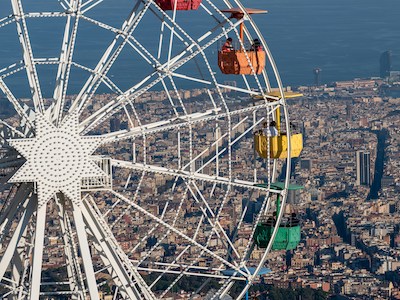
Tibidaboa
Barcelona's second landmark hill, Tibidabo, lies about four miles (6km) northwest of the city in a wooded range that forms a backdrop to the urban landscape. Tibidabo can be reached by funicular and is particularly popular on weekends with locals, as it's home to the Parc d'Atraccions: an amusement park that has some thrilling rides and a renowned house of horrors. Tibidabo also features the soaring Torre de Collserola telecommunications tower, which offers visitors the chance to ride in a glass lift to an observation platform 377 feet (115m) high to enjoy a truly phenomenal view.
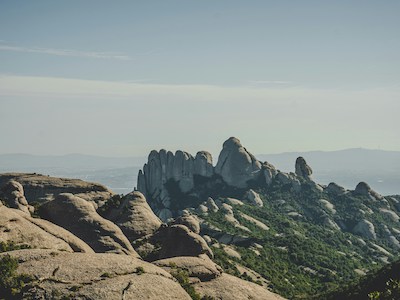
Montserrat
One of the most visited sites in Catalonia is the monastery at Montserrat, which is 35 miles (56km) northwest of Barcelona. The monastery is surrounded by strange rocky crags and caves, and was founded in 1025 to celebrate local visions of the Virgin Mary. It has become one of the most important pilgrimage sites in Spain, sitting atop a 4,000-foot (1,200m) high mountain and housing about 80 monks. Its main claim to fame is a 12th-century Romanesque wooden sculpture of a black Virgin Mary, known as La Moreneta, which thousands come here to see and touch. There's lots to see at Montserrat, which has a fascinating museum housing masterpieces by artists such as Caravaggio and Picasso.
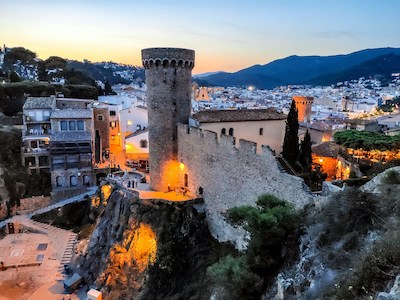
Tossa de Mar
The medieval fishing village of Tossa de Mar, 56 miles (90km) north of Barcelona, is the most attractive town on the Costa Brava, offering lovely sandy beaches and a lively atmosphere. Visitors are drawn to its 12th century walled town, Vila Vella, the ancient walls, battlements, and towers enclosing a quaint historical labyrinth. There is also the ancient Castillo de Tossa de Mar, a one-time Roman fortress dominating the bay, which visitors are free to explore. There are four beaches within the town itself and numerous others flanking Tossa on either side.
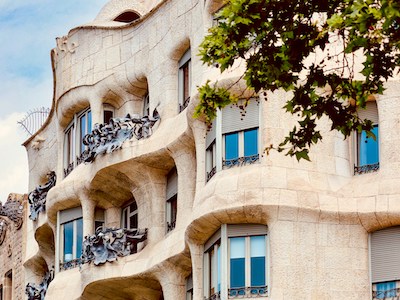
La Pedrera (Casa Mila)
Commonly known as La Pedrera, Casa Mila is an iconic construction by creative genius Antoni Gaudi. It was his last civil work before dedicating all his time to the assembly of La Sagrada Família. The building is a UNESCO World Heritage Site and demonstrates the signature style of Gaudi through its elaborate designs, globular shapes, assorted sculptures, colourful tiles, and intricate details. Built between 1906 and 1912, the distinct architecture of La Pedrera and her counterparts was unconventional and unheard of in the popular Spanish architecture of the time. The remarkable building is now a cultural centre that organises a range of activities and hosts exhibitions of various kinds.
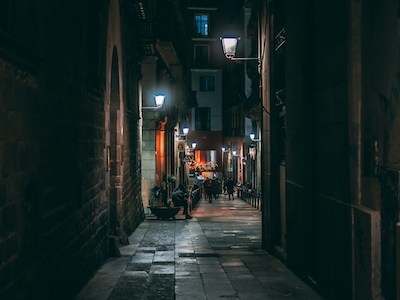
Barri Gotic
Known as the Gothic Quarter, the Barri Gotic is Barcelona's oldest district. A former fortified Roman settlement, the maze of atmospheric narrow streets house spectacular Gothic buildings and cathedrals, marking the city's heyday during the 14th and 15th centuries. There are many significant sights; the most illustrious being the immense Gothic Cathedral La Seu, with its breathtaking facade and serene cloister. With an assortment of shops and delightful sidewalk cafes, the Barri Gotic is a worthwhile day out. To view the remains of this ancient Roman city, once known as Barcino, travellers should visit the Museu d'Historia de la Ciutat in the Palau Real, where Roman streets are still visible in the extensive cellar.

FC Barcelona Museum and Stadium
FC Barcelona, one of Europe's most beloved football teams, has an informative museum with displays of photographs, documents, memorabilia, and trophies that cover over a century of club history. Visitors also get the opportunity to explore the famous stadium on the Camp Nou Tour, which takes fans to the heart of the club, the changing rooms, tunnel and Nou Camp pitch. With a panoramic view of the stadium from the grandstand, visitors can get a taste of the heady atmosphere of a FC Barcelona match on their home ground. The museum also has an official store where club jerseys, caps and accessories can be purchased.
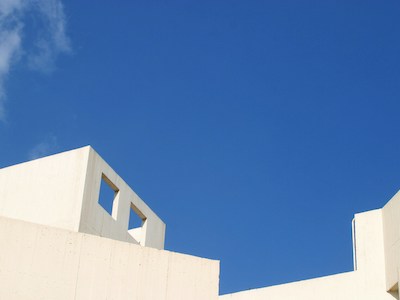
Joan Miro Foundation
A celebration of the life and work of world-renowned Catalan surrealist sculptor and painter Joan Miro, the Joan Miro Foundation in Barcelona houses the majority of the artist's works, including paintings, drawings, sculptures, and textiles. Distinguished by his use of primary colours, simple lines, and two-dimensional geometric shapes, Miro refused to be categorised into an established art movement and, as a result, continued to create unparalleled works of art. Another product of original artistic genius from Barcelona, the works of Miro at the Joan Miro Foundation allow visitors to further delve into the unrestrained creative energy of this exceptional city.
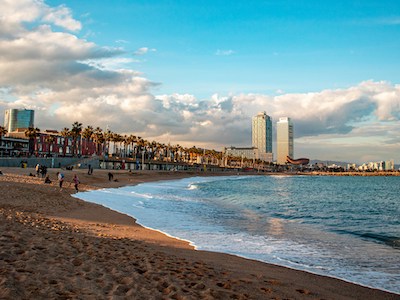
Barcelona Beaches
Barcelona's coastline offers a string of attractive beaches, which are the ideal diversion after excessive sightseeing and shopping. Travellers can visit the popular Barceloneta Beach, only ten minutes from the city centre, where there is a selection of beach bars, and can cool down with a refreshing swim and marvel at the bizarre architecture of Homenatge a la Barceloneta by Rebecca Horn. Windsurfing and kite surfing are popular activities on this always-bustling beach. The end of Barceloneta and the beginning of Icaria Beach is marked by Frank Gehry's El Peix. Marbella Beach is unofficially Barcelona's nudist beach but, although nudity is tolerated, many people choose to keep their clothes on. For a peaceful beach near the city centre, visitors should look no further than Caldetes, which is invariably almost empty.
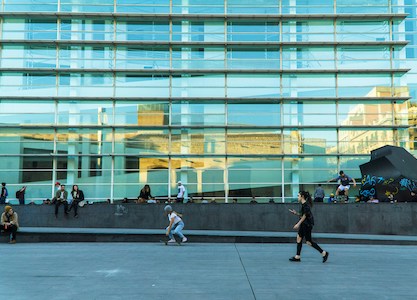
Museum of Contemporary Art
The Barcelona Museum of Contemporary Art is situated in the once-shabby Raval District, just off La Rambla. Over the years its front plaza has become synonymous with international skateboarders, being fondly known as the famous MACBA, drawing skaters and creatives from around the world to unite, compete, and collaborate against the backdrop of this chic white building. Being a work of art in itself, the Museum of Contemporary Art was designed to take advantage of as much natural light as possible and the cool, airy interiors confidently hold the works of modern art luminaries such as Basquiat, Klee, Tapies, and Barcelo. Kids will enjoy the museum, as there is a lot to touch and interact with.
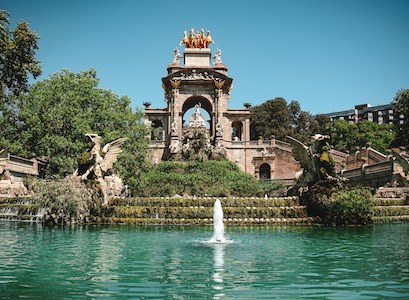
Parc de La Ciutadella
Located in the centre of Barcelona, the Parc de La Ciutadella is a great place to spend a sunny summer's afternoon relaxing under a tree with a book, a picnic and the family. Originally the site was chosen for a fortress in 1714, but in 1869 it was decided that the area should be a park and the palace was demolished. Exploring the park and being out on the water is a fun way to unwind, as the setting features a lake where visitors can hire a small rowboat. The paths for walking, jogging and cycling are wide and well maintained; there are some interesting sculptures dotted about the park, as well as some striking buildings.
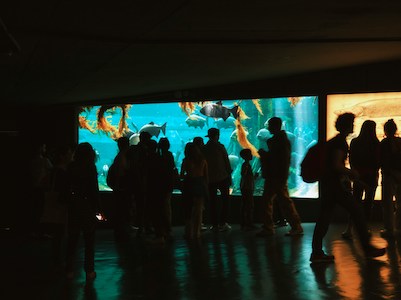
Barcelona Aquarium
Featuring thousands of brightly coloured and exotic fish, the Barcelona Aquarium is a must for children of all ages. With 35 different tanks holding creatures from different oceans, the aquarium is the largest of its kind in Europe and features species such as giltheads, moray eels, sunfish, rays, sand tiger sharks, and sandbar sharks. The oceanarium is the largest Mediterranean-themed aquarium in the world and the showpiece of the Barcelona Aquarium, where visitors will find a transparent tunnel winding through it that gives them the exhilarating feeling of walking underwater. The whole aquarium houses about 11,000 organisms from 450 different species.

Poble Espanyol
The mock village of Poble Espanyol is an outdoor open-air architectural museum featuring workshops, where visitors can see different types of craftwork taking place. Around 117 buildings, streets and squares make up the village and have been reproduced to scale, giving the true feel of a Spanish village. The village was built in 1929 for the Barcelona International Exhibition and some of the replica buildings have now outlived the originals, which were found in villages across Spain. Visitors can purchase high-quality handmade dolls, embroidery, glassware, soap, textiles, ceramics and more from the 30-plus craft workshops that specialise in the traditional secrets of producing these items.
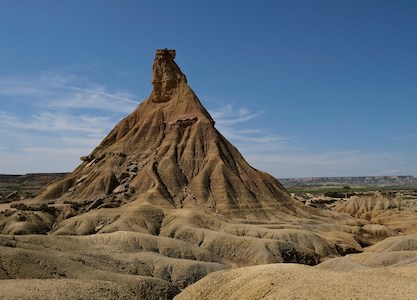
Parque Natural de Bardenas Reales
The UNESCO Biosphere Reserve of Parque Natural de Barenas Reales is a semi-desert landscape. The malleable clay, chalk, and sandstone of the landscape has been eroded into surprising and unusual shapes by wind and rain over the millennia. Vegetation of any kind is scarce in the reserve, as is human habitation, and the streams that flow across the barren land are seasonal. The rugged cliffs, hills and ravines are home to Egyptian Vultures, Golden Eagles and Peregrine Falcons, plus a total of 24 species of birds of prey, as well as many other bird and animal species.
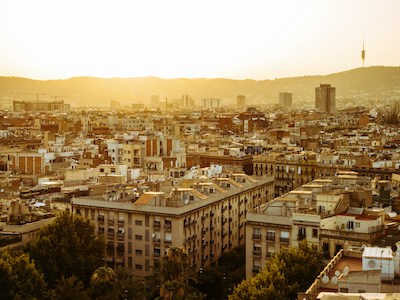
El Raval
El Raval is a compelling and interesting neighbourhood with a long and chequered history. It's one of two districts bordering La Rambla, with the other being the established tourist area of Barri Gotic. Located near Barcelona's port, El Raval has always had an exciting, multicultural character, and is particularly popular with backpackers and revellers keen to check out the city's cutting-edge galleries and clubs.
While having undergone a period of development, the area still remains slightly dangerous and tourists should be careful of pickpockets and avoid walking alone at night. El Raval is full of cool bars and funky cafes that beg to be explored, from Bar Marsella with its Art Nouveau interior to London Bar, a run-down though stately place once frequented by artists such as Hemingway, Picasso, and Mirò. Another great sight in El Raval is the Palau Guell, one of Gaudi's lesser-known masterpieces, which features large parabolic gates decorated with beautiful ironwork.
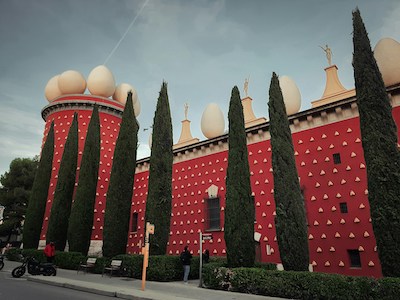
Figueres
A wonderful daytrip destination from Barcelona, Figueres is a lovely Catalonian town that also happens to be the birthplace of surrealist artist Salvador Dali. The main reason for visiting Figueres is to see the Dali Theatre and Museum (Teatre-Museu Dalí), a suitably bizarre-looking building that is pink, studded and crowned with enormous eggs. It was not only designed by Dali, but also houses a full spectrum of his imaginative output including paintings, sculptures, 3D collages, mechanical devices, and weird and wonderful installations. The artist is buried in the museum's basement.
Eating Out
In 2002 Barcelona was awarded the title of most gourmand city in Europe by the prestigious Le Guide des Gourmands, the first non-French city so named in the 15 years of the publication's run (at the time). Being the capital city of the Autonomous Community of Catalonia, Barcelona's restaurants specialise in the delicious Catalan cuisine, typically flaunting the extensive use of garlic, olive oil and fish for many kinds of meals. It's not uncommon to find fish mixed with red meat in a stew. The pa amb tomàquet (bread smeared in tomato and seasoned with olive oil and salt) is a signature Catalonian delicacy served with every meal in most restaurants. Tapas, now popular worldwide, originated in Spain, and these bite-sized treats are a firm favourite in the city of Barcelona.
Catalonia is a premier wine region for Spain and the birthplace of Cava sparkling wine. Dark red grapes in the region make for the darker 'black' wine, or vi negre, which is a stronger red concoction. Dry white wines come second to the Cava in popularity among tourists and locals alike.
Barcelona's restaurants usually open around 8am (if they are open for breakfast that is) and typically remain open until midnight. Supper hours are very late, with most residents opting to dine between 9pm and 10pm.
Shopping
Barcelona is a shopper's playground, as a three-mile (5km) shopping route runs from Las Ramblas, through Placa de Catalunya, along Passeig de Gràcia and up Avenue Diagonal. Most of it's pedestrianised and pleasant to navigate on foot. The Tomb bus is a service specifically tailored for shoppers in the city, and covers all the major retail centres; it departs every seven minutes from Catalonia Square and makes 28 stops up until Placa Pius XII. Tickets can be bought on the bus.
Barcelona is a very fashion conscious place and several big names such as Giorgio Armani, Burberry and Bally are represented in exclusive stores in the city, while there are also local Spanish mega-fashion stores such as Zara, Mango and Adolfo Dominguez. Travellers on a budget might want to take advantage of seasonal sales. Winter sales officially start around 10 January and summer sales around 5 July; savings are generally between 50 to 70 percent during these sales.
Shops in Barcelona open at about 9am and close between 8pm and 9pm daily. Some shops close for a lunchtime siesta between 2pm and 4pm. Non-EU visitors to Spain have a little extra incentive to bring souvenirs home: tax free shopping. So long as the goods bought are items that can be taken back to their country with them and the bill exceeds €90, they will make a saving of 18 percent on purchases. Visitors should look out for the Tax Free signs in shop windows.
Nightlife
With a lunchtime siesta, there's no excuse for not having enough energy to make it through a long night of partying up a storm on the streets of Barcelona. Alfresco dining is a good way to start an evening of revelry and has become a way of life in many of the city's squares. Good spots to sip on a glass of wine and people-watch are the Placa del Sol in Gracia and Passeig del Born, Placa del Pi and Plaça Reial in the Old Town.
Barcelona is a trendy city with a fickle club scene that changes just about as often as its locals change their minds on what they'd like to drink. During the summer, chiringuitos (beach bars) open along the white sands of Barcelona's urban beaches, each with its own vibe and music, and are popular with both locals and tourists.
Key nightlife spots include Barri Gotic, which despite its medieval atmosphere, boasts a great selection of bars and clubs to choose from, though it's best for visitors to keep possessions close to their bodies, as pickpockets operate in these areas. Las Ramblas is also full of party venues. This is where visitors will find some of Barcelona's most popular and trendiest nightclubs and bars. L'Eixample, north of the city, is the place to go to enjoy Barcelona's gay scene. Port Olimpic is great for night owls, as there are plenty of bars, clubs and great seafood restaurants, while the yacht marina is a great place to enjoy sundowners on a warm summer's evening.
With the rest of Europe right on its doorstep, Barcelona is dripping with culture and there are plenty of regular performances of ballet, music, dance and opera at various venues such as the Joan Miro Foundation and the Greek Theatre, or the Liceu Opera House. And for a more relaxed evening, visitors can enjoy Flamenco at various venues throughout the city such as Tablao de Carmen and Travel Bar Flamenco Guide, which are both located in the old quarter's centre.
Getting Around
Barcelona's excellent transport system includes the metro, buses, trains, funiculars and cable cars; tickets for all (except night buses) are transferable across the system. The metro is the fastest and most efficient way to get around the city, except during the rush hour when it becomes very crowded. The bus network is extensive and is easy to master with a transport map. Night buses take over from about 10pm to 6am. During summer the hop-on, hop-off Bus Turistic links all the main sights and tourist destinations. Taxis are plentiful and inexpensive and are a good option especially late at night, but charge extra for a number of things. Uber and Cabify are also options. Hiring a car is unnecessary and frustrating within the city, but can be useful if visitors are planning daytrips beyond its limits.
Barcelona Climate and Weather
Barcelona enjoys a subtropical-Mediterranean climate with long, hot summers and cool winters. Winters, between December and February, are mild and snow is rare. January is the coldest winter month, when temperatures average between 41ºF (5ºC) and 57ºF (14ºC) during the day and colder at night. The peak summer months are June to August, but Barcelona's summer really lasts a full six months, from May to October. August is the hottest summer month, with temperatures averaging between 70ºF (21ºC) and 84ºF (29ºC) during the day. April and November are transitional months that have more unpredictable weather. Barcelona doesn't get much rain as there are only a handful of rainy days every month; the wettest months are September, October and May, with thunderstorms occurring between August and November. Although the city gets plenty of sun, it can get foggy and cloudy. Sea fog is especially common in early spring.
The ideal months to visit Barcelona, the Costa Brava and the nearby resorts of Sitges and Vilanova are May, June, July and September, when visitors can expect good, hot weather. In August, despite the shade in the tree-lined boulevards, locals desert Barcelona for the coastal resorts to escape the heat.
Spain travel info
Electricity
The electrical current is 230 volts, 50Hz. European-style two-pin plugs are standard.
Language
Spanish is the official language, but English is widely understood in areas frequented by tourists. Catalan, Galician and Basque are spoken in the relevant areas.
Money
Spain's official currency is the euro (EUR), which is divided into 100 cents. Money can be exchanged at bureaux de change and major hotels, but banks give the best rates. All major credit cards are widely accepted at most hotels, restaurants, and shops. ATMs are widespread and are generally the cheapest and most convenient method of obtaining money.
Tipping
Hotel and restaurant bills usually include service charges, but additional tips are welcomed for services rendered. In established restaurants, tips of about 10 percent are expected. Drivers of metered taxis expect small tips and it's customary to tip about 5 to 10 percent for most services, including guides.
Health
There are no health risks associated with travel to Spain, and no vaccination certificates are required for entry. Medical facilities are good but comprehensive travel insurance is always advised. Spain has a reciprocal health agreement with most EU countries that provides emergency health care for EU travellers on the same terms as Spanish nationals. After Brexit, the Global Health Insurance Card (GHIC) replaced the European Health Insurance Card (EHIC) for UK citizens. The GHIC allows UK citizens access to state healthcare during visits to the EU. The GHIC is not valid in Norway, Iceland, Liechtenstein or Switzerland, nor is it an alternative to travel insurance. EU travellers should take a European Health Insurance Card (EHIC). Travellers should take any medication they require along with them, in its original packaging and accompanied by a signed and dated letter from a doctor detailing what it is and why it is needed.
Safety
Most visits to Spain are trouble-free except for occasional street crime. Petty crime, such as pickpocketing and purse snatching, is most common in larger cities, particularly during holidays, festivals and weekends, and especially on public transport and in tourist areas. Thieves may work alone or in groups; visitors should be wary of strangers who offer or ask for help of any kind, or inform them of a stain on their clothes, as these are often ways of providing a distraction for accomplices. There are also scams involving letters for outstanding traffic fines or Spanish lottery winnings. Travellers can avoid incidents if they exercise all the normal precautions.
Local customs
Smoking in public places is banned and stiff fines will be imposed for smoking in areas such as enclosed public spaces, areas where food is prepared and sold, public transport, non-smoking areas of bars and restaurants, and any places that cater for children. Drinking alcohol in the streets of Madrid and the streets of the Canary and Balearic Islands is illegal.
Doing business
The business culture in Spain is slowly shifting but, for now, it's entrenched in tradition and it can take some time for foreigners to gain a foothold in the Spanish working world. It's important never to undermine authority as hierarchy is central to Spain's business world. Managers tend to make decisions without considering input from their colleagues.
A strong emphasis is placed on social status, character attributes, and personal pride. Success is often hinged upon being well-dressed, honourable, and dignified, while also exhibiting great social skills. Business meetings are generally conducted face-to-face and can go on for long periods, as Spaniards prefer long deliberations in order to avoid uncertainty in corporate dealings. Business meetings in Spain tend to tread a fine line between personal and formal.
Conducting business in Spain can entail navigation through a lot of red tape and bureaucracy. Spanish is the language of business, but some of the larger multinationals conduct meetings in both English and Spanish. Business hours are often quite varied, but generally open by 9am and close in the mid-evening with a two-hour lunch break during the early afternoon.
Business attire is quite conservative with men wearing dark or linen suits, shirts and silk ties. Women should wear modest dresses or tailored suits. Brand names or labels attract affirmation from colleagues and associates.
After the conclusion of successful negotiations, gifts are appropriate. Gifts should be of high quality and, when receiving a gift, it should be opened in front of the giver. Business cards are important and should be bilingual. Meetings are best scheduled for mid-morning, and establishing a formal yet personable environment is important before beginning. Meetings often occur over lunches and dinners.
Duty free
Travellers from EU countries are allowed the following items duty free: 800 cigarettes or 400 cigarillos or 200 cigars or 1kg tobacco; 110 litres beer; 90 litres wine; and 10 litres spirit. Travellers from non-EU countries may have 200 cigarettes or 100 cigarillos or 50 cigars or 250g tobacco; 1 litre spirits, 4 litres wine, and 16 litres beer.
Communications
The international access code for Spain is +34. WiFi is widely available; travellers can purchase local SIM cards for unlocked phones or use eSIMs if their cellular providers support it on their networks.
Passport & Visa
The borderless region known as the Schengen area includes the following countries: Austria, Belgium, Czech Republic, Denmark, Estonia, Finland, France, Germany, Greece, Hungary, Iceland, Italy, Latvia, Lithuania, Luxembourg, Malta, The Netherlands, Norway, Poland, Portugal, Slovakia, Slovenia, Spain, and Sweden. All these countries issue a standard Schengen visa that has a multiple entry option, allowing the holder to travel freely within the borders of all. Non-EU nationals must hold a return or onward ticket, all necessary documents for onward travel and sufficient funds. It is highly recommended that passports have at least six months' validity remaining after the intended date of departure from Spain. Immigration officials often apply different rules to those stated by travel agents and official sources.
Entry requirements
United States citizens require a passport valid for three months beyond the period of intended stay. No visa is required for stays of up to 90 days within a 180 day period.
British citizens require a passport valid for three months beyond the period of intended stay. No visa is required for stays of up to 90 days within a 180 day period.
Canadian citizens require a passport valid for at least three months beyond period of intended stay. No visa is required for stays of up to 90 days within a 180 day period.
Australian citizens require a passport valid for at least three months beyond period of intended stay. No visa is required for stays of up to 90 days within a 180 day period.
South African citizens require a passport valid for at least three months beyond period of intended stay. A visa is required.
Irish nationals require a valid passport, but a visa is not necessary.
New Zealand citizens require a passport valid for at least three months beyond period of intended stay. No visa is required for stays of up to 90 days within a 180 day period.
Useful contacts
Spanish Tourist Office, Madrid: www.spain.info.
112 (General).


